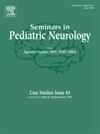在资源有限的环境中进行幼儿癫痫的基因检测
IF 2.1
4区 医学
Q2 CLINICAL NEUROLOGY
引用次数: 0
摘要
婴儿癫痫是一组异质性癫痫,发病年龄可达两岁,在发展中国家构成重大负担,往往由各种遗传变异引起。在婴幼儿癫痫综合征中观察到遗传异质性和表型多效性现象。在当前精准医学时代,早期遗传诊断和有针对性的管理可以显著影响癫痫和发育结局。尽管基因检测进展迅速,但获得基因诊断设施是一项全球性挑战,特别是在资源有限的情况下。遗传诊断的主要障碍是费用高,进入专门实验室的机会有限,以及需要专家解释。然而,考虑到资源限制,诸如靶向基因小组、与参考实验室合作和临床表型等策略可以帮助最大限度地提高诊断产量。对基础设施、政策支持和国际合作的投资可以弥补这一差距,确保受影响的儿童得到及时和准确的诊断。这篇综述讨论了在资源有限的环境中整合基因检测的重要性、挑战和潜在的策略,强调需要负担得起和可获得的解决方案,以加强患者护理。本文章由计算机程序翻译,如有差异,请以英文原文为准。
Genetic testing for infantile-onset epilepsies in resource-limited settings
Infantile-onset epilepsies, a heterogenous group of epilepsies with onset up to two years of age, constitute a significant burden in developing countries and frequently result from various genetic variations. The phenomena of genetic heterogeneity and phenotypic pleiotropy are observed across epilepsy syndromes of infantile-onset epilepsies. In the current era of precision-based medicine, early genetic diagnosis and targeted management can significantly influence epilepsy and developmental outcomes. Despite rapid advancement in genetic testing, access to genetic diagnostic facilities is a global challenge, especially in resource-limited settings. The major barriers to genetic diagnosis are high costs, limited access to specialized laboratories, and the need for expert interpretation. Nevertheless, strategies like targeted gene panels, collaborations with reference laboratories, and clinical phenotyping can help maximize the diagnostic yield while considering resource constraints. Investments in infrastructure, policy support, and international collaboration can bridge the gap and ensure that affected children receive timely and accurate diagnoses. This review discusses the importance, challenges, and potential strategies for integrating genetic testing in resource-limited environments, emphasizing the need for affordable and accessible solutions that can enhance patient care.
求助全文
通过发布文献求助,成功后即可免费获取论文全文。
去求助
来源期刊

Seminars in Pediatric Neurology
CLINICAL NEUROLOGY-PEDIATRICS
CiteScore
4.80
自引率
0.00%
发文量
38
审稿时长
84 days
期刊介绍:
Seminars in Pediatric Neurology is a topical journal that focuses on subjects of current importance in the field of pediatric neurology. The journal is devoted to making the status of such topics and the results of new investigations readily available to the practicing physician. Seminars in Pediatric Neurology is of special interest to pediatric neurologists, pediatric neuropathologists, behavioral pediatricians, and neurologists who treat all ages.
 求助内容:
求助内容: 应助结果提醒方式:
应助结果提醒方式:


